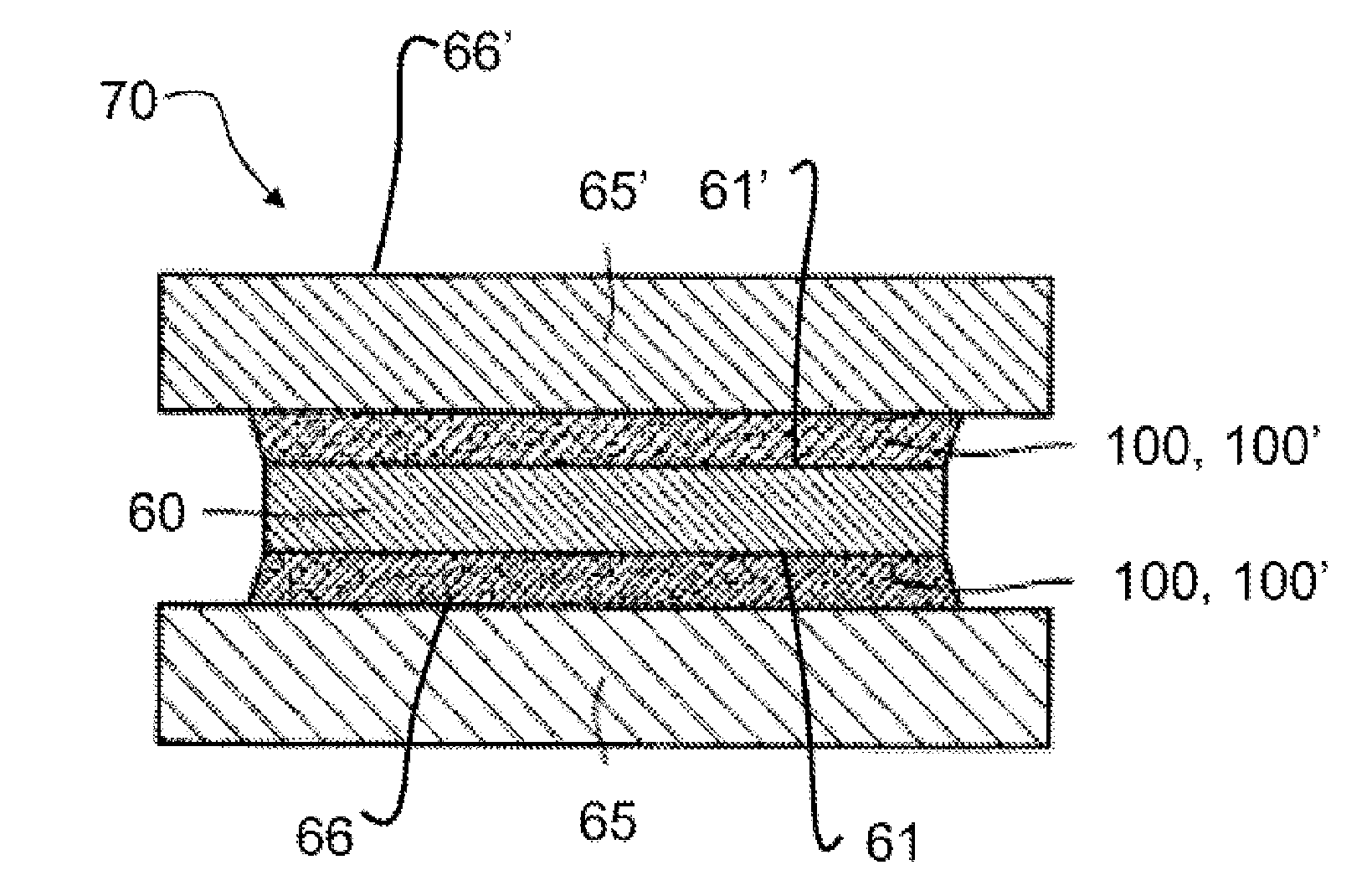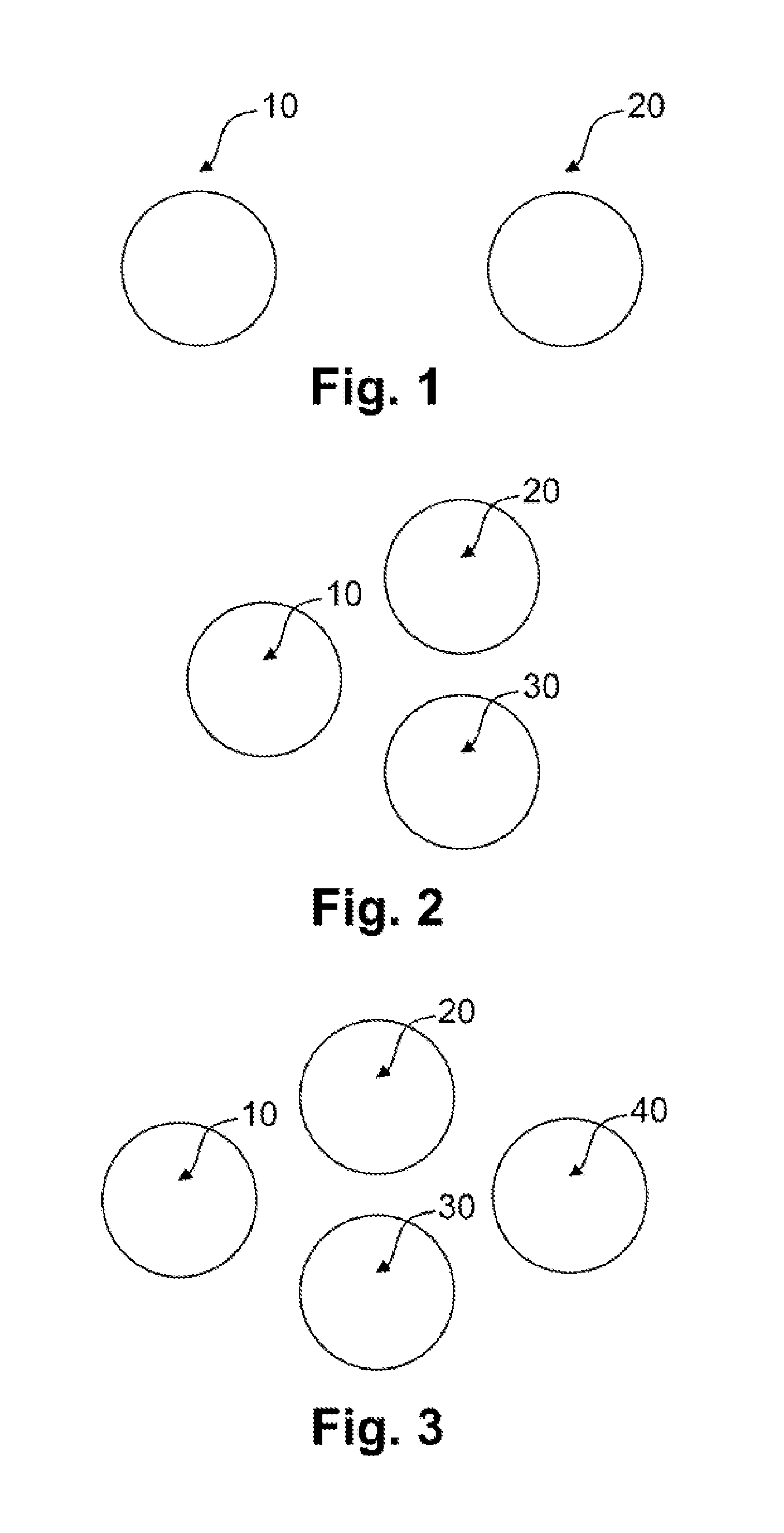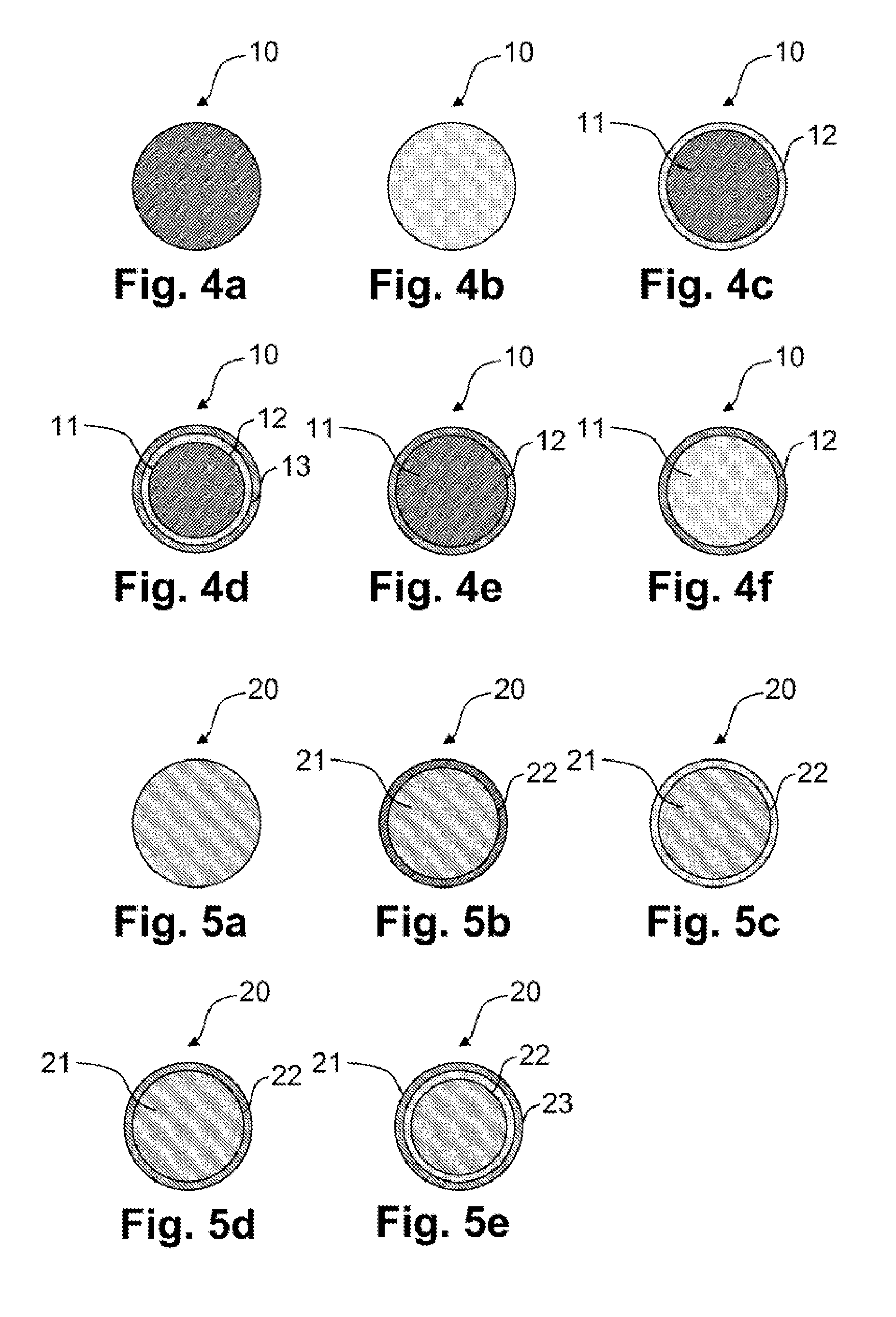Starting material and process for producing a sintered join
a technology of starting material and process, applied in the direction of metal layered products, solid-state devices, metal-working apparatus, etc., can solve the problems of thermal stress, failure of assembly, electrical and mechanical properties decrease, etc., and achieve the effect of crack formation in the event and crack formation
- Summary
- Abstract
- Description
- Claims
- Application Information
AI Technical Summary
Benefits of technology
Problems solved by technology
Method used
Image
Examples
first embodiment
[0102]FIG. 1 schematically shows first particles 10 and second particles 20 which are provided in a starting material according to the invention for a sintered bond.
second embodiment
[0103]FIG. 2 schematically shows first particles 10, second particles 20 and third particles 30 which are provided in a starting material according to the invention for a sintered bond.
third embodiment
[0104]FIG. 3 schematically shows first particles 10, second particles 20, third particles 30 and fourth particles 40 which are provided in a starting material according to the invention for a sintered bond.
[0105]The starting material can, in the embodiments illustrated in FIGS. 1 to 3, contain metal-containing first particles 10 of one or more of the embodiments shown in FIGS. 4a to 4f. For example, the first particles 10 can be noble metal-containing and / or copper-containing, in particular silver-containing, particles. In the interests of simplicity, the figures are explained below for the example of silver-containing first particles 10. FIG. 4a shows a first particle 10 which is composed of silver in metallic form.
[0106]FIG. 4b shows a first particle 10 which is composed of an organic or inorganic silver compound, for example silver carbonate (Ag2CO3) and / or silver oxide (Ag2O, AgO), which can be converted into metallic silver by a thermal treatment.
[0107]FIG. 4c shows a first par...
PUM
| Property | Measurement | Unit |
|---|---|---|
| atmospheric humidity | aaaaa | aaaaa |
| humidity | aaaaa | aaaaa |
| temperature stresses | aaaaa | aaaaa |
Abstract
Description
Claims
Application Information
 Login to View More
Login to View More - R&D
- Intellectual Property
- Life Sciences
- Materials
- Tech Scout
- Unparalleled Data Quality
- Higher Quality Content
- 60% Fewer Hallucinations
Browse by: Latest US Patents, China's latest patents, Technical Efficacy Thesaurus, Application Domain, Technology Topic, Popular Technical Reports.
© 2025 PatSnap. All rights reserved.Legal|Privacy policy|Modern Slavery Act Transparency Statement|Sitemap|About US| Contact US: help@patsnap.com



